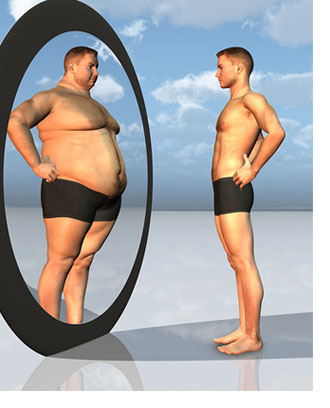
Who Are the Men and Boys Suffering from Anorexia?
September 29, 2014—A new study by researchers from the University of Montreal reveals the current state of knowledge about anorexia in men and boys. "Most of the knowledge about anorexia pertains to females. However, about 10% of persons affected are males, and we believe this figure is underestimated," says Laurence Corbeil-Serre, lead author of the study. "Our results show that there appear to be similarities between the behavioural symptoms of males and females, but certain particularities can be identified in males, especially related to personality, gender identity, and sexual orientation."
The researchers conducted a review of the literature comparing 24 studies conducted over 15 years and involving 279 participants aged between 11 and 36 years. From this review, they identified seven relevant cited variables, either because of their recurrence in the literature or because of divergent results found in the research, and were able to identify major trends among these variables. The variables are clinical presentation, pre-existing conditions to the disorder, personality characteristics, sexual orientation and activity, gender identity, and comorbid disorders.
It is clear from their study that males and females affected by anorexia share the same fear of gaining weight and "getting fat." Participants in the study presented clinically significant weight loss, with an average BMI of 16.1, placing them in a state of malnutrition. However, dissatisfaction with body image for males was more related to muscle mass, a motivation that can be associated with social norms of male beauty. "Moreover, excessive physical exercise is far ahead of rituals around food and vomiting in the list of strategies used to lose weight and the behaviours associated with anorexia nervosa," suggests Corbeil-Serre. Their review also suggests a common comorbidity in males with depression and substance abuse and the presence of antisocial, explosive, or psychotic personality traits.
The researchers also note that the rate of homosexuality among participants was much higher than in the general population. "We postulate that the importance of physical appearance in the gay community exacerbates the disorder once it is present and results in an overrepresentation of homosexual patients in treatment units. As well, anorexia nervosa may be a way to delay sexual issues for individuals with a conflictual or questioning homosexual orientation," says Corbeil-Serre. Restrictive behaviour, finally, may be used to suppress male sexual characteristics in order to evade issues related to sexual maturity, which are a source of anxiety, or to approach models of female beauty. The researchers suggest, however, that because their hypotheses are not supported empirically, they must be submitted to further investigation.
"We largely compared males with females because there are many studies and tools for studying anorexia in females, which explains the rather difficult task we had in discovering which symptoms were specific to males. Our study deepens our understanding of the subject and enables a better understanding of the disorder in males, by highlighting their specific characteristics," says Corbeil-Serre. The researcher recommends adopting a clinical observation model rather than automatically comparing males with knowledge already established regarding females with anorexia.
"In light of the findings from this review, it seems all the more necessary to carry out further in-depth studies with boys with anorexia, by better defining the variables under study and improving methodological rigour", concludes Dominique Meilleur, who supervised the study.
ARTICLE:
"L'anorexie mentale chez les adolescents et les jeunes adultes de sexe masculin : recension des écrits," Laurence Corbeil-Serre and Dominique Meilleur.Neuropsychiatrie de l'enfance et de l'adolescence, August 4, 2014 (online publication).
